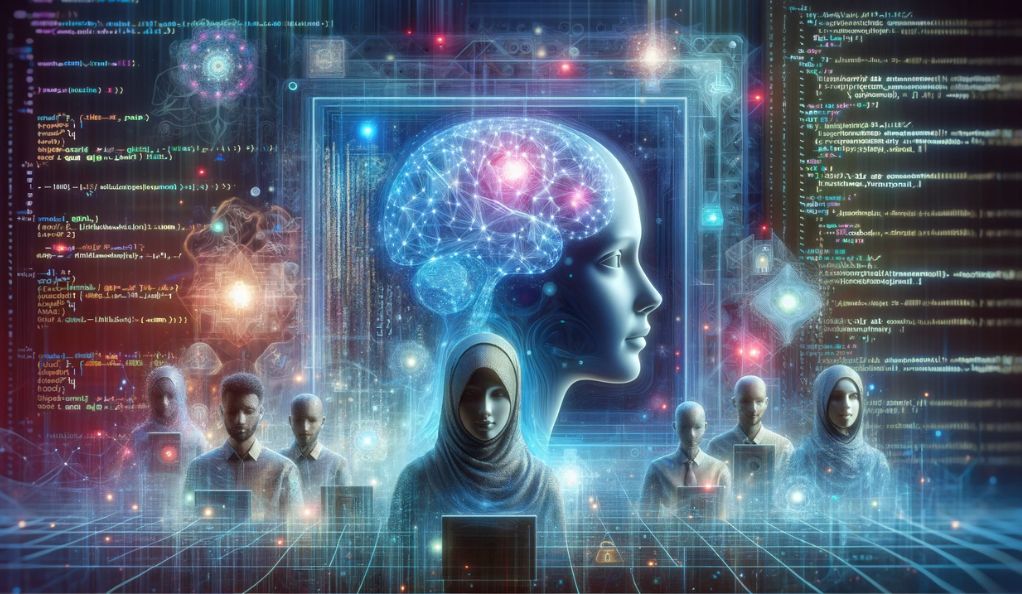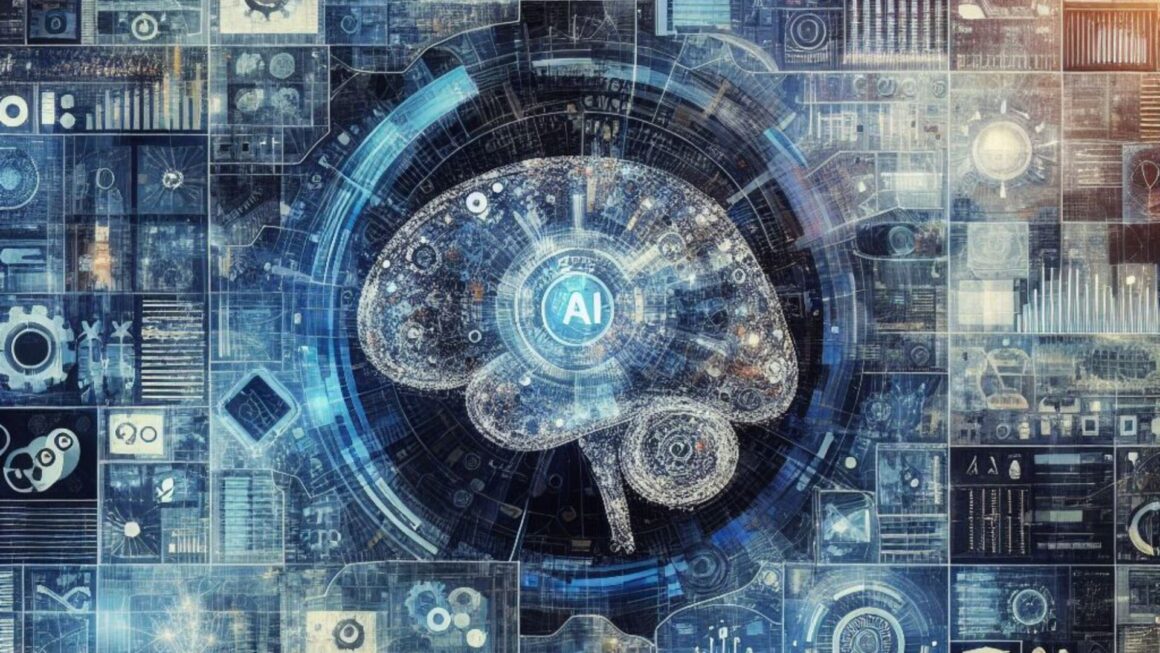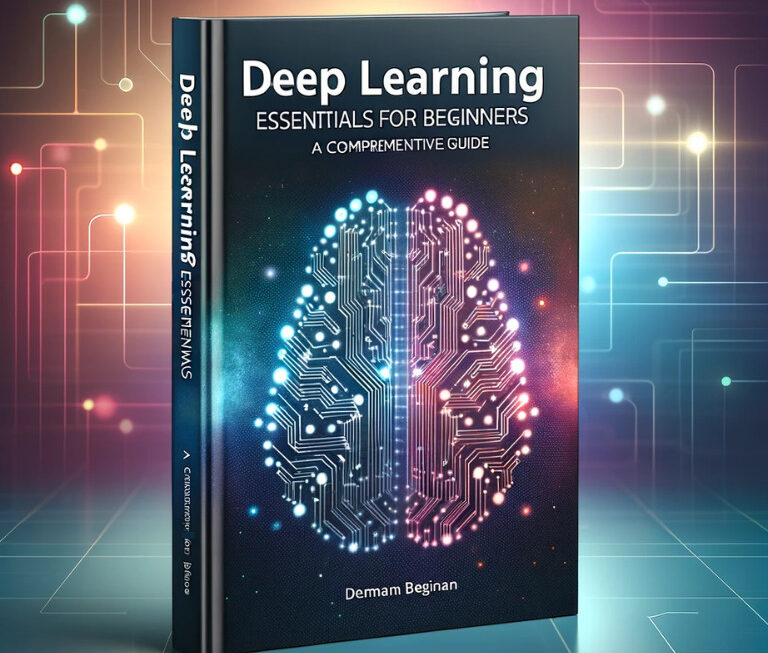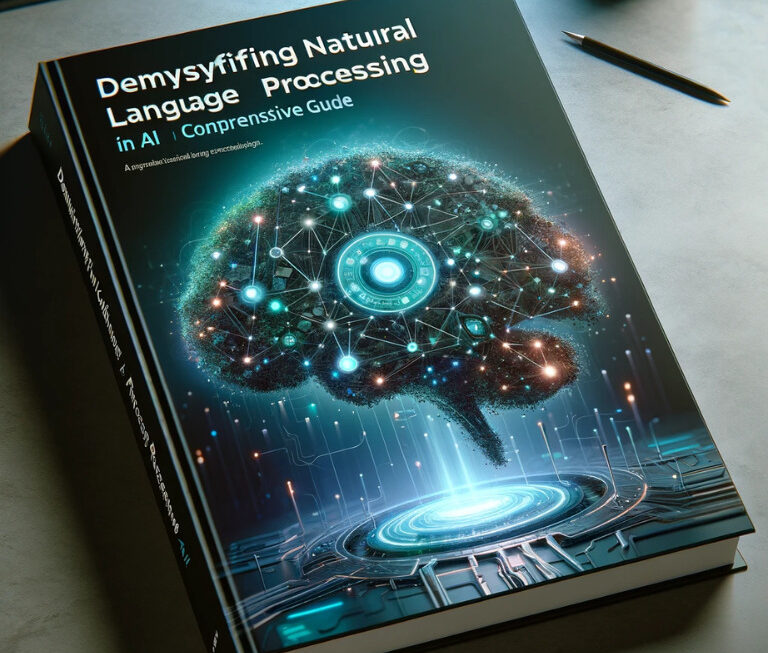In the ever-evolving landscape of technology, machine learning (ML) has emerged as a revolutionary force, particularly in the realm of coding and software development. At its core, machine learning is the science of getting computers to act without being explicitly programmed. It’s a subset of artificial intelligence (AI) that provides systems the ability to automatically learn and improve from experience.
The Essence of Machine Learning
Machine learning models are algorithms that parse data, learn from that data, and then apply what they’ve learned to make informed decisions. An easy analogy would be how a human learns from experience; machine learning does the same for computers. The process begins with observations or data, such as examples, direct experience, or instruction, to look for patterns in data and make better decisions in the future.
Why Machine Learning Matters in Coding
The integration of machine learning models into coding is not just a trend but a significant shift in how software developers approach problem-solving and feature development. ML models can process vast amounts of data at a speed and accuracy that human coders cannot match. They can identify patterns and anomalies, make predictions, or generate recommendations based on historical data. This capability is invaluable in coding tasks such as predictive typing, code optimization, and even bug detection.
The Role of Data in Machine Learning

Data is the lifeblood of machine learning models. These models are trained using large sets of data — the more data, the better they can learn and function. This training involves feeding the model with input data and the corresponding correct output. Over time, the model adjusts its parameters to minimize errors, enhancing its decision-making capabilities.
Training Data: The Foundation of Machine Learning
Training data is a dataset used to train machine learning models. It is a critical component that directly influences the model’s performance. The quality, diversity, and volume of training data determine how well a model can learn and generalize to new data. Here’s a simple representation of the relationship between training data and machine learning models:
| Training Data Characteristics | Impact on Machine Learning Model |
|---|---|
| Volume | More data can improve the model’s accuracy and its ability to generalize. |
| Diversity | A variety of data ensures the model can handle different scenarios. |
| Quality | Clean, well-labeled data leads to more reliable and accurate models. |
| Relevance | Data must be relevant to the problem the model is intended to solve. |
The Anatomy of Machine Learning Models
To truly harness the power of machine learning within the coding domain, it’s essential to understand the components that make up these sophisticated models. At their core, machine learning models consist of an algorithm, a set of rules or instructions that guide the analysis of data, and the subsequent decision-making process.
Understanding Algorithms and Data Structures
An algorithm in machine learning is akin to a recipe in cooking—it outlines the steps needed to process inputs and produce the desired output. These algorithms can range from simple linear regression, which can predict values, to complex deep learning networks that can recognize speech and images.
Data structures are equally important. They organize and store data in a way that enables efficient access and modification. In machine learning, data structures might include vectors for data points, matrices for weights in neural networks, and trees for decision-making processes.
The Role of Training Data
Training data is the dataset from which the machine learning model learns. It is composed of numerous examples, each consisting of an input and a corresponding output. For instance, in a spam detection model, the inputs would be various email features, and the outputs would be the classification of those emails as ‘spam’ or ‘not spam.’
The training process involves adjusting the model’s parameters—essentially tuning the algorithm—to minimize the difference between the predicted output and the actual output. This process is known as ‘fitting’ the model to the data.
The Learning Process: Iteration and Optimization
Machine learning models learn through a process of iteration and optimization. They use an optimization algorithm, such as gradient descent, to adjust their parameters incrementally with the goal of minimizing a cost function—a measure of how wrong the model’s predictions are.
The learning process can be visualized as a feedback loop:
- The model makes predictions based on the training data.
- The cost function evaluates these predictions.
- The optimization algorithm adjusts the model’s parameters.
- The model makes new predictions with the updated parameters.
- The loop continues until the model’s performance satisfies a predefined threshold or until it can no longer improve.
Model Evaluation: Ensuring Accuracy and Reliability
Once a model is trained, it must be evaluated to ensure it can make accurate predictions on new, unseen data. This is typically done using a separate dataset known as the validation set. The model’s performance on the validation set gives an indication of how well it has learned and how it might perform in the real world.
Hyperparameters: Fine-Tuning the Model
Hyperparameters are the settings of the algorithm that are determined before the learning process begins. They can significantly affect the performance of the model. For example, in a neural network, the number of layers and the number of neurons in each layer are hyperparameters that the developer must set.
Choosing the right hyperparameters is a critical step and often involves a process called hyperparameter tuning or optimization, where various combinations of hyperparameters are tested to find the most effective ones.
Types of Machine Learning Models
Diving deeper into the realm of machine learning reveals a variety of models, each with its unique approach to learning from data and making predictions. Understanding these types is crucial for developers to apply the right model to the right task.
1. Supervised Learning: The Guided Approach
Supervised learning models are the most common type in machine learning. They require labeled datasets—meaning each example in the training data is paired with the correct output (the label). These models learn to map inputs to outputs, making them ideal for predictive tasks.
For example, a supervised learning model can predict house prices based on features like size, location, and number of bedrooms. The model would be trained on a dataset where the actual prices of houses are known.
2. Unsupervised Learning: The Self-Discovery Path
Unsupervised learning models work with unlabeled data. They aim to understand the underlying structure of the data by identifying patterns without any guidance on what the output should be. These models are often used for clustering and association tasks.
A classic example is customer segmentation in marketing. An unsupervised model can group customers into clusters based on purchasing behavior, which can then inform targeted marketing strategies.
3. Reinforcement Learning: Learning Through Interaction
Reinforcement learning is a type of machine learning where models learn to make decisions by interacting with an environment. They receive feedback in the form of rewards or penalties and learn to maximize the cumulative reward.
This type of learning is often used in robotics and gaming. For instance, a reinforcement learning model could learn to play chess by playing many games against itself, gradually improving its strategy with each game.
4. Semi-Supervised Learning: The Middle Ground
Semi-supervised learning sits between supervised and unsupervised learning. It uses a small amount of labeled data alongside a larger amount of unlabeled data. This approach is beneficial when labeling data is expensive or time-consuming.
An application of semi-supervised learning could be in speech recognition, where a model is initially trained on a small set of labeled voice samples and then further trained on a larger set of unlabeled voice data.
5. Deep Learning: Mimicking the Human Brain
Deep learning is a subset of machine learning that uses neural networks with many layers (hence “deep”) to model complex patterns in data. These models excel at tasks like image and speech recognition.
For instance, deep learning has been pivotal in the development of facial recognition technology, enabling software to identify individual faces with high accuracy.
6. Ensemble Methods: The Power of Collaboration
Ensemble methods combine predictions from multiple machine learning models to produce a final prediction. The idea is that by combining different models, the strengths of one can compensate for the weaknesses of another, leading to better overall performance.
A common ensemble method is Random Forest, which combines the predictions of many decision trees to make a more accurate final prediction than any single tree could.
7. Transfer Learning: Leveraging Pre-Trained Models
Transfer learning involves taking a model that has been trained on one task and repurposing it for a second related task. This is particularly useful when the second task has limited training data available.
An example of transfer learning is using a model pre-trained on millions of images to start a new task in medical imaging diagnosis, where datasets are smaller.
Implementing Machine Learning in Software Development

The theoretical understanding of machine learning models provides a foundation, but the true test lies in their implementation. Integrating machine learning into software development is a multifaceted process that involves selecting the right model, preparing data, training the model, and deploying it to production.
Integration of ML Models with Coding Projects
Integrating machine learning models into coding projects starts with a clear definition of the problem. Developers must identify what they want the model to predict or classify and then choose the appropriate machine learning model based on the problem type and the data available.
For instance, if the task is to filter out spam emails, a supervised learning model like a Naive Bayes classifier could be trained on a dataset of emails labeled as ‘spam’ or ‘not spam.’ The integration would involve setting up the model within the email system to classify incoming messages automatically.
Preparing Data for Machine Learning
Data preparation is a critical step in the machine learning pipeline. It involves collecting, cleaning, and formatting data to ensure that the model can learn effectively. This might include handling missing values, normalizing data, and splitting the data into training and test sets.
Training and Validating the Model
Once the data is prepared, the next step is to train the model. This involves running the machine learning algorithm on the training data to learn the patterns. After training, the model is validated using a separate dataset to ensure that it generalizes well to new data.
Continuous Learning and Model Updating
Machine learning models can become outdated as data and patterns change over time. Therefore, it’s important to implement a system for continuous learning, where the model is regularly updated with new data. This ensures that the model remains accurate and relevant.
Deployment and Monitoring
Deploying a machine learning model into production is the final step. This involves integrating the model into the existing software infrastructure so that it can start making predictions or decisions in real-time. Once deployed, the model must be monitored to track its performance and to quickly identify any issues.
Machine Learning Tools and Libraries for Developers
The landscape of machine learning is rich with tools and libraries designed to assist developers in building and deploying models. These resources are the building blocks that enable the integration of machine learning into software development, even for those without a deep background in data science.
Overview of Popular ML Frameworks
Several frameworks have become the industry standard due to their robustness, flexibility, and ease of use. Here are some of the most widely used:
- TensorFlow: Developed by Google, TensorFlow is an open-source library for numerical computation and machine learning. TensorFlow offers a comprehensive ecosystem of tools, libraries, and community resources that allows researchers to push the state-of-the-art in ML, and developers to easily build and deploy ML-powered applications.
- PyTorch: Created by Facebook’s AI Research lab, PyTorch is an open-source machine learning library based on the Torch library. It’s known for its flexibility and is particularly favored for applications in deep learning and artificial intelligence.
- Scikit-learn: Built on NumPy, SciPy, and matplotlib, this tool is best suited for traditional machine learning algorithms. It’s simple and efficient for data mining and data analysis, which makes it accessible for beginners.
- Keras: Operating atop TensorFlow, Keras is an open-source software library that provides a Python interface for artificial neural networks. Keras acts as an interface for the TensorFlow library and is designed for human beings, not machines, focusing on enabling fast experimentation.
How to Choose the Right Tool
Selecting the right tool or library depends on several factors:
- Project Requirements: The complexity of the project and the type of machine learning model required can influence the choice of tool. For deep learning tasks, TensorFlow or PyTorch might be more appropriate, while for simpler machine learning tasks, Scikit-learn could suffice.
- Ease of Use: Some tools are more user-friendly than others. Keras, for example, is known for its simplicity and is often recommended for beginners.
- Community and Support: A large community and good support can be invaluable, especially when troubleshooting issues. TensorFlow and PyTorch both have large communities.
- Performance: The speed and efficiency of the tool can be a deciding factor, especially for applications that require real-time processing.
- Integration: Consider how well the tool integrates with existing systems and workflows. It should be compatible with the software’s architecture and the team’s expertise.
Challenges in Machine Learning Model Development

While machine learning can offer powerful solutions across various domains, the development of these models comes with its own set of challenges. Addressing these challenges is crucial for the successful implementation and deployment of machine learning in coding projects.
Overcoming Data Quality Issues
Data quality is one of the most significant challenges in machine learning. High-quality data is a prerequisite for training effective models. Issues such as missing values, inconsistent formatting, and noisy data can lead to poor model performance. Developers must invest time in data preprocessing, which includes cleaning, normalizing, and transforming data to ensure that the model receives accurate and relevant information.
Avoiding Overfitting and Underfitting
Overfitting occurs when a model learns the training data too well, including the noise and outliers, to the point where it performs poorly on new data. Underfitting, on the other hand, happens when a model is too simple to capture the underlying pattern in the data. Both issues can be mitigated by techniques such as cross-validation, regularization, and choosing the right model complexity.
Balancing Bias and Variance
Bias is an error introduced by approximating a real-world problem by a too-simple model. Variance is an error from sensitivity to small fluctuations in the training set. High bias can cause underfitting, and high variance can cause overfitting. The trade-off between bias and variance is a fundamental challenge and requires careful model selection and training.
Scalability and Computational Resources
Machine learning models, especially deep learning models, can require substantial computational resources. Training large models on large datasets can be time-consuming and expensive. Developers need to consider the scalability of their solution and may need to utilize cloud computing services or optimize their models to run on available hardware.
Interpretability and Explainability
As machine learning models, particularly deep learning models, become more complex, they also become less interpretable. This “black box” nature can be problematic, especially in fields that require explainability, such as healthcare and finance. Techniques such as feature importance scores and model-agnostic methods can help to interpret model predictions.
Ethical Considerations and AI Governance
Machine learning models can inadvertently perpetuate and amplify biases present in the training data, leading to unfair or unethical outcomes. Developers must be vigilant about the ethical implications of their models and strive for fairness, accountability, and transparency in machine learning.
Conclusion
As we look to the horizon of software development, the integration of machine learning heralds a new era of innovation and capability. The future is one where AI not only automates tasks but also serves as a creative partner, enhancing the developer’s work and paving the way for personalized user experiences at scale. The democratization of AI, through accessible tools and platforms, promises a surge in AI-driven solutions as developers from diverse backgrounds harness the power of machine learning.
This transformative landscape brings with it the imperative for developers to engage in lifelong learning and to navigate the ethical dimensions of AI with responsibility. As machine learning becomes increasingly woven into the fabric of software development, it is a call to action for developers to innovate with conscience, ensuring the security and integrity of AI applications. Embracing these changes, developers can lead the charge towards a future where technology amplifies human potential and addresses the most pressing challenges of our time.




